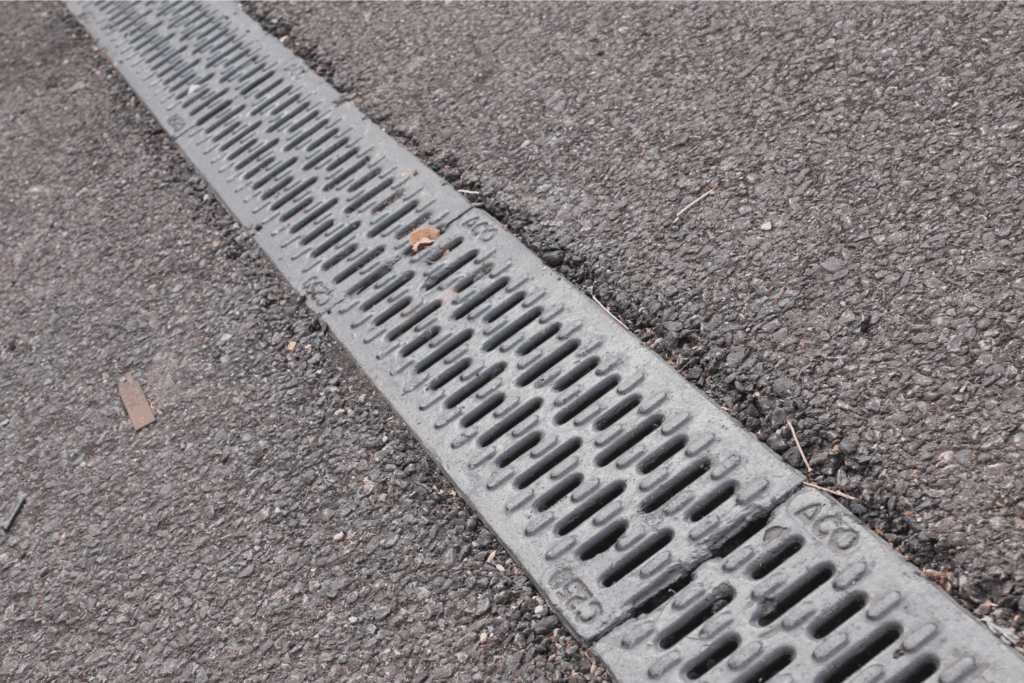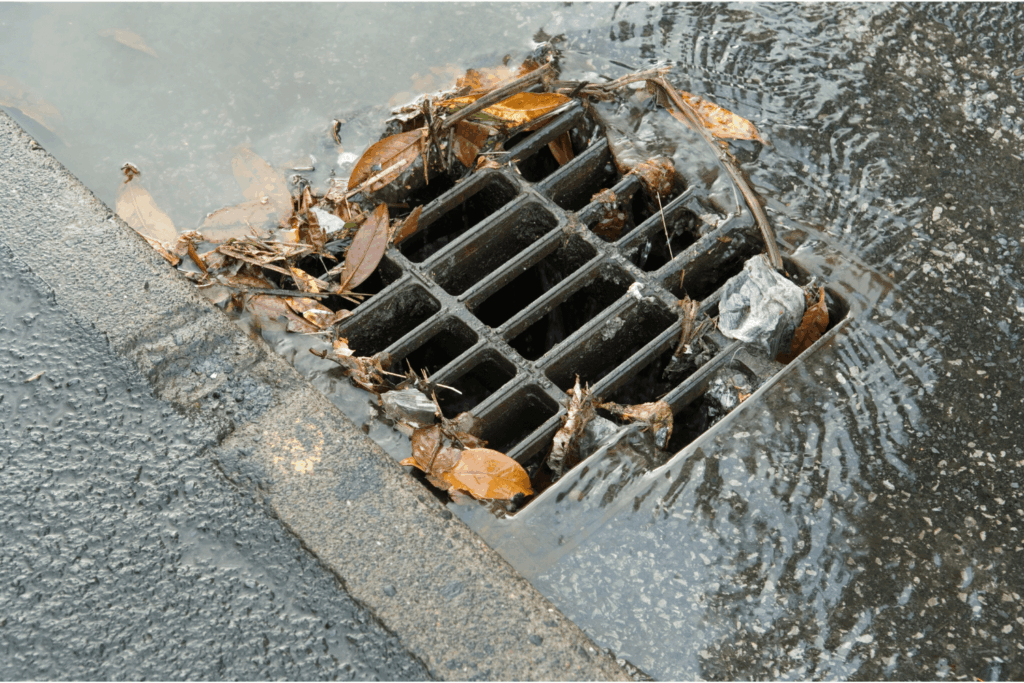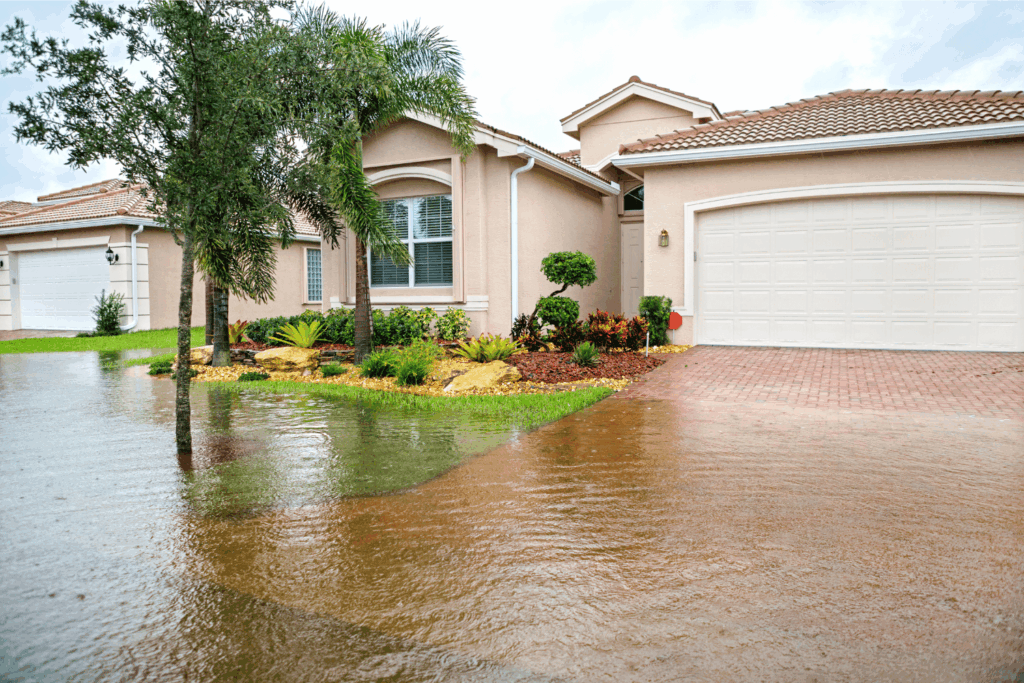If you’ve ever noticed water pooling at the base of your driveway, or worse, running toward your garage or foundation, you’re not alone. Improper driveway drainage is a common problem, especially after heavy rainfall or snowmelt. Left unresolved, that excess water can damage your driveway, erode landscaping, or even seep into your basement or foundation.
The solution? A driveway drain, also known as a trench drain. Let’s explore what they are, how they work, when they’re necessary, and why investing in proper driveway drainage solutions can protect your property long-term.
What Is a Driveway Drain?

A driveway drain is a surface drainage system designed to capture and redirect water that would otherwise pool or flow down your driveway. The most common type is the trench drain, which features a long, narrow channel with a grate covering. This system is installed directly into the surface of your driveway, usually at the bottom of a slope or just in front of a garage.
Once installed, it collects surface water and routes it away through underground piping to a safe discharge point like a dry well, storm drain, or appropriate runoff zone.
Why Driveway Drains Matter
Poor driveway drainage isn’t just a minor nuisance. Over time, standing water can lead to a host of costly and even dangerous problems, including:
- Foundation damage: Water pooling near the home can seep into cracks or through porous materials, causing long-term structural issues.
- Basement leaks: Driveway water that isn’t diverted properly often finds its way into basements, especially in older homes.
- Soil erosion: Water running off the driveway can wash away landscaping, mulch, and topsoil, creating unsightly or unsafe conditions.
- Concrete deterioration: Pooled water contributes to cracking, heaving, and pitting in concrete or asphalt surfaces.
- Mold and mildew growth: Especially when water is allowed to sit near garage doors or exterior basement walls.
Installing a trench drain for your driveway can eliminate these risks and improve your home’s safety and curb appeal.
When Should You Consider Installing a Driveway Drain?
Not every driveway needs a drainage system, but several signs indicate you might:
- Your driveway slopes toward your home or garage
- You’ve noticed standing water after rain or snow
- Water regularly seeps into your garage or basement
- Your driveway has begun to crack or settle due to water damage
- You’re planning a new driveway installation and want to future-proof it
Trench drains are especially useful for long or steep driveways, where water gathers speed and volume quickly.
How a Trench Drain Works
A trench drain is essentially a surface-level gutter system built into your driveway. It includes:
- A long channel (usually plastic, polymer, or concrete) that collects water across a wide surface area.
- A metal or plastic grate that covers the channel to keep out debris and provide a smooth, drivable surface.
- A sloped base that encourages water flow toward the connected discharge piping.
- An outlet pipe system that safely diverts collected water away from the foundation or landscaping.
Proper installation is crucial. The drain must be level, connected to an appropriate outflow system, and designed to withstand vehicle traffic without shifting or collapsing.
Installation Considerations
Installing a driveway drain is not a simple DIY weekend project. It typically requires:
- Excavating a channel into the driveway
- Pouring concrete or compacting soil around the drain housing
- Grading for proper slope
- Connecting the drain to an appropriate discharge or stormwater management system
- Ensuring ADA-compliant grate selection, if applicable
Professional installation ensures the drain not only functions correctly but also integrates smoothly into your existing driveway surface, whether asphalt, concrete, or pavers.
Are There Alternatives to Trench Drains?

Yes, depending on your property’s layout and water problems, other driveway drainage solutions may be more appropriate or used in conjunction with trench drains:
- Channel drains: Similar to trench drains but often used in patios or flat areas.
- French drains: Subsurface drains that collect groundwater rather than surface runoff.
- Driveway swales: Grassy or gravel depressions used to slow and divert water.
- Permeable pavers: Allows water to seep through and drain naturally below the surface.
At AM Wall Anchor & Waterproofing, we evaluate your property holistically to recommend the right drainage plan.
How Driveway Drainage Affects Your Foundation
One of the most overlooked consequences of poor driveway drainage is the impact it can have on your home’s foundation. When water consistently flows or pools against your structure, it increases hydrostatic pressure on basement walls. Over time, this leads to leaks, cracks, and foundation settling.
In this sense, installing a driveway drain is not just a surface solution; it’s also a foundational investment. Pairing it with exterior waterproofing or yard grading can create a full-system defense against water intrusion.
Protect Your Property from the Top Down
Water has a way of finding its path, whether through your driveway, along your walls, or into your basement. A properly installed driveway drain is one of the most effective, preventative steps you can take to guard your home against water damage, erosion, and expensive repairs.
If you’re noticing signs of poor drainage or planning a new driveway installation, now is the time to act. AM Wall Anchor & Waterproofing offers expert evaluation and installation of trench drains, French drains, and other proven driveway drainage solutions tailored to your property. Reach out to us today to schedule your free estimate!

